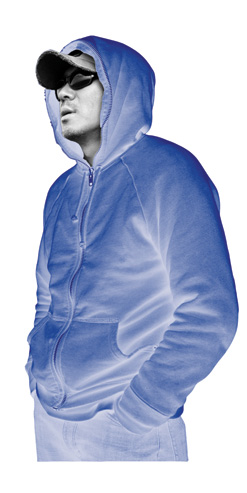His lawless Manchurian terrain makes its way to American theaters
 By Jaeki Cho
By Jaeki Cho
Nearly two years after Kim Ji-woon’s The Good, the Bad, the Weird became a hit at the Korean box office, the multi-genre-weaving director’s kimchi western has earned a United States release. An homage to Italian filmmaker Sergio Leone’s classic, The Good, the Bad and the Ugly, Kim’s action flick follows the quest of three resolute gunslingers on the hunt for hidden treasure in the lawless terrains of 1930s Manchuria. Starring Song Kang-ho, Lee Byung-hun and Jung Woo-sung, it premiered at the Cannes Film Festival in 2008. At the moment, director Kim is busy with two new projects: a thriller starring Choi Min-sik and Lee Byung-hun called I Saw a Devil (to be released in the summer) and his American debut, Max, a French noir-influenced crime picture that will begin shooting in Philadelphia this winter. While on set for I Saw a Devil in Korea, Kim spoke to KoreAm (in Korean) about his past and present works.
Your 2003 film, A Tale of Two Sisters, is both the highest-grossing Korean horror film and the first to be screened in American theaters. What were your thoughts on its 2009 American remake?
Uninvited was made in a very American way. It still attempted to achieve some sort of a twist, making it stand out compared to other teen horror films. The only problem I had was how the portrayal of ghosts was interpreted. I don’t think that’s the production’s fault, but there’s just a difference in the general public’s perceptions on a subject.
What’s I Saw a Devil about?
It’s a thriller about a serial killer (Choi Min-sik) murdering a man’s (Lee Byung-hun) fiancée. A character chases after a devil-like figure, and he himself ends up somewhat like the devil. Choi Min-sik first brought up the idea last summer, and asked me if I could direct it.
The vibe sounds different from The Good, the Bad, the Weird.
My films, more often than not, emphasize a genre’s characteristics. The Good, the Bad, the Weird, for example, covers a sub-genre of Western films popularly known as “spaghetti westerns,” which was uncommon in Korean cinema.
Were there other Korean versions of Western films in the past?
When the genre was popular in the ’60s and ’70s, every country had its own interpretation. In Korea, there were a couple films that were set in Manchuria with Western features. One of the films that inspired me the most was Break The Chain by Lee Man-hui. The Good, the Bad, the Weird is a mix between Sergio Leone’s spaghetti western style and early-’70s Korean action films.
Lee Byung-hun plays “The Bad.” I thought your work with him for A Bittersweet Life was amazing. The stylized gun scenes in that film reminded me of John Woo flicks.
Thank you. In Korea, it’s uncommon to have that much usage of guns in films. As a result, many actors from Korea romanticize roles that stylishly use guns. And for A Bittersweet Life, instead of Hong Kong noir, French noir influenced me. It was interesting because many French people, after they saw the film, said that Lee Byung-hun reminded them of the French actor Alain Delon.
What was the atmosphere like on the set?
Since Song Kang-ho was the sunbae (senior), he displayed leadership and other actors followed. On the sets of Korean films, there are these familial bonds among the actors and staff. We did face some tough conditions in the Gobi Desert though. We were hit by several giant sandstorms. Remember the sandstorms in [American 1999 film] The Mummy? We were hit with the real-life versions of those.
The American release of The Good, the Bad, The Weird, from IFC Films, will roll out in cities nationwide throughout May. For screening dates and times, please visit www.ifcfilms.com.









